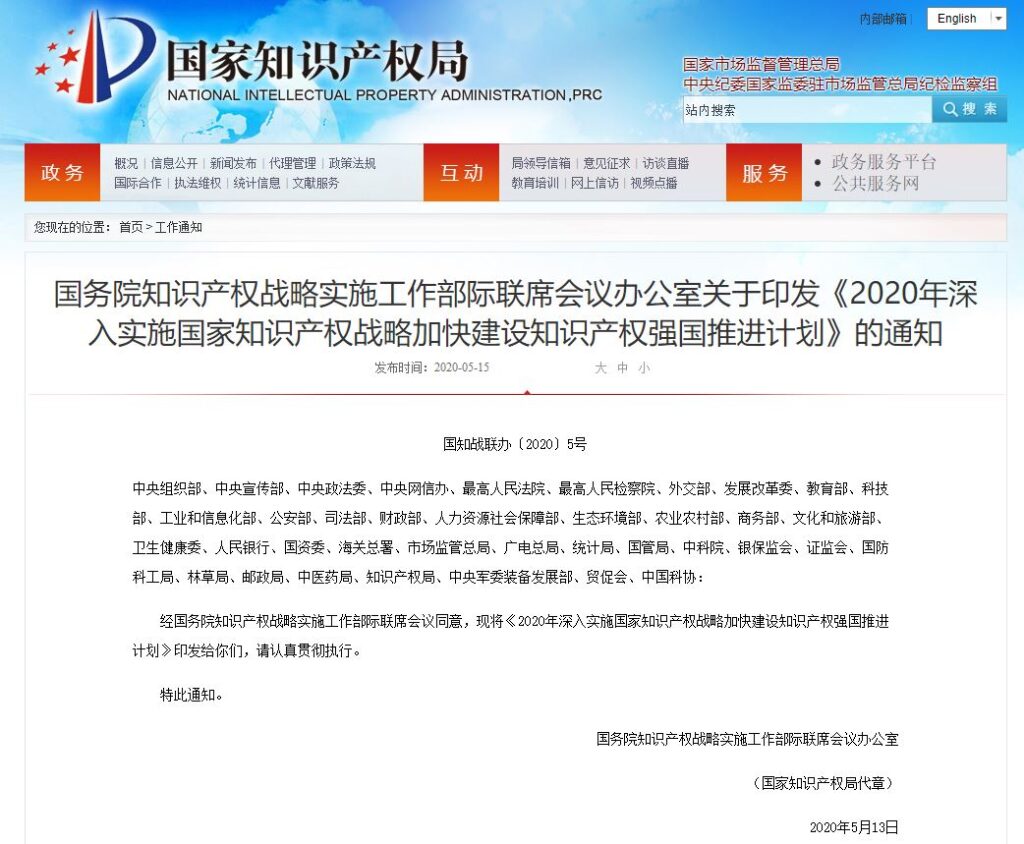China Releases the “Plan for Further Implementation of the National Intellectual Property Strategy to Accelerate the Construction of an Intellectual Property Power Country by 2020”
On May 15, 2020, the China National Intellectual Property Administration (CNIPA) published the “Plan for Further Implementation of the National Intellectual Property Strategy to Accelerate the Construction of an Intellectual Property Power Country by 2020.” The plan lists 100 points to accomplish the goal of becoming an “IP Power Country.” Some of the highlights include eliminating subsidies or rewards for utility model, design and trademark applications; reduce examination time for trademark and patent applications; reduce “abnormal” patent application filings and malicious filing of trademarks; and ensure university promotion decisions aren’t solely based on patent filings and grant rates.
Point 59 requires CNIPA to abolish local government funding and incentives for utility model, design and trademark applications. The funding and incentives might be encouraging the filing of “abnormal” applications as both utility model and designs are not examined in China. Note that rewards or subsidies for invention patents, including foreign filing of invention patent applications, is not affected by this. For example, Shanghai Pudong offers 4,000 RMB for each Chinese invention patent and 100,000 RMB (about $14,000 USD) per foreign patent but no incentive for designs or utility models and so can continue to do so without change.
Point 59 also lists as a goal to from a long-term mechanism to combat abnormal patent applications and malicious trademark registration and hoarding – but does not suggest the shape of the mechanism.
Point 55 is to optimize the patent examination system to reduce the time to grant to 16 months for high value patents. Further, collective examination, prioritized examination and the Patent Prosecution Highway are to be improved.
Similarly, point 56 is to reduce the average examination time for trademarks to 4 months.
Point 60, which is the joint responsibility of CNIPA, the Ministry of Education, and the Ministry of Science & Technology, is geared towards universities. The goals include to gradually establish a system for disclosing scientific and technological achievements in colleges and universities and a pre-patent evaluation system for patent applications. Stop granting awards for patent applications and similarly substantially reduce and gradually cancel awards for patent grants. Further, promotions, performance reviews, job appointments, etc. cannot be based on the number of patent filings nor the number of patent grants.

Back to All Resources

